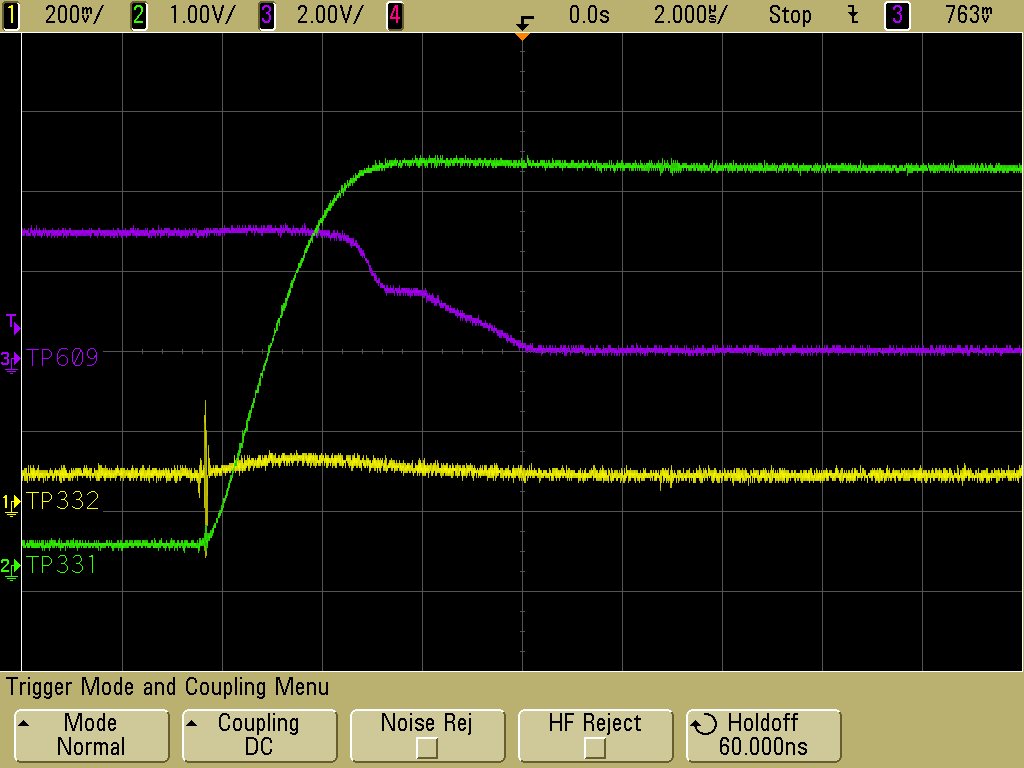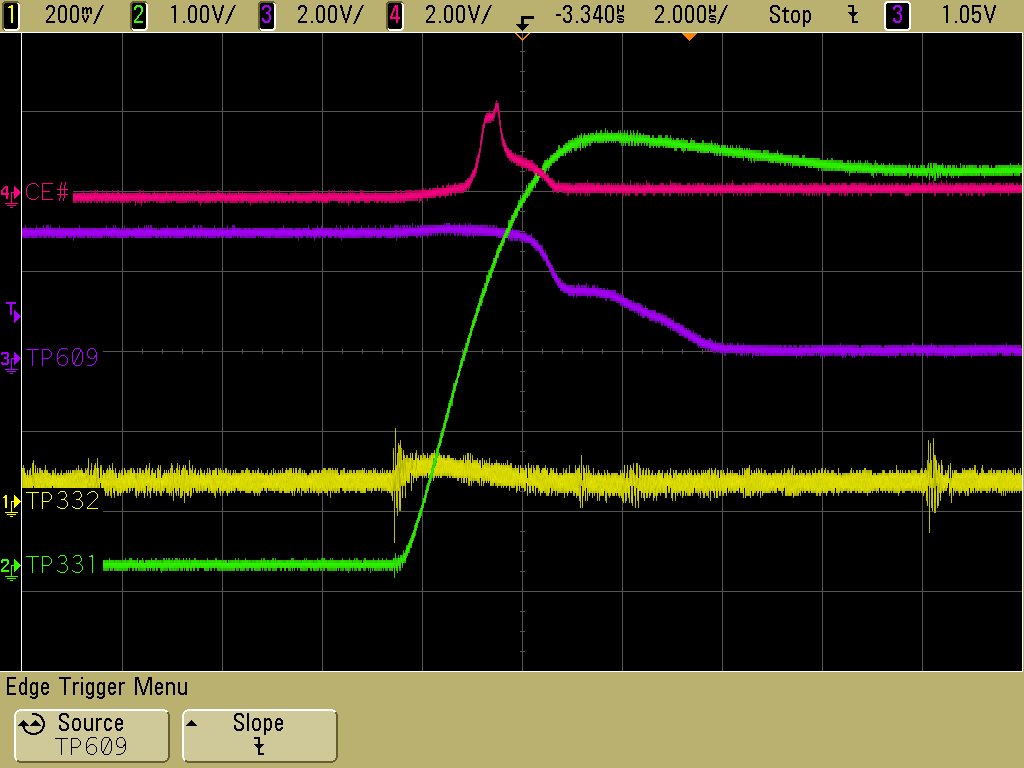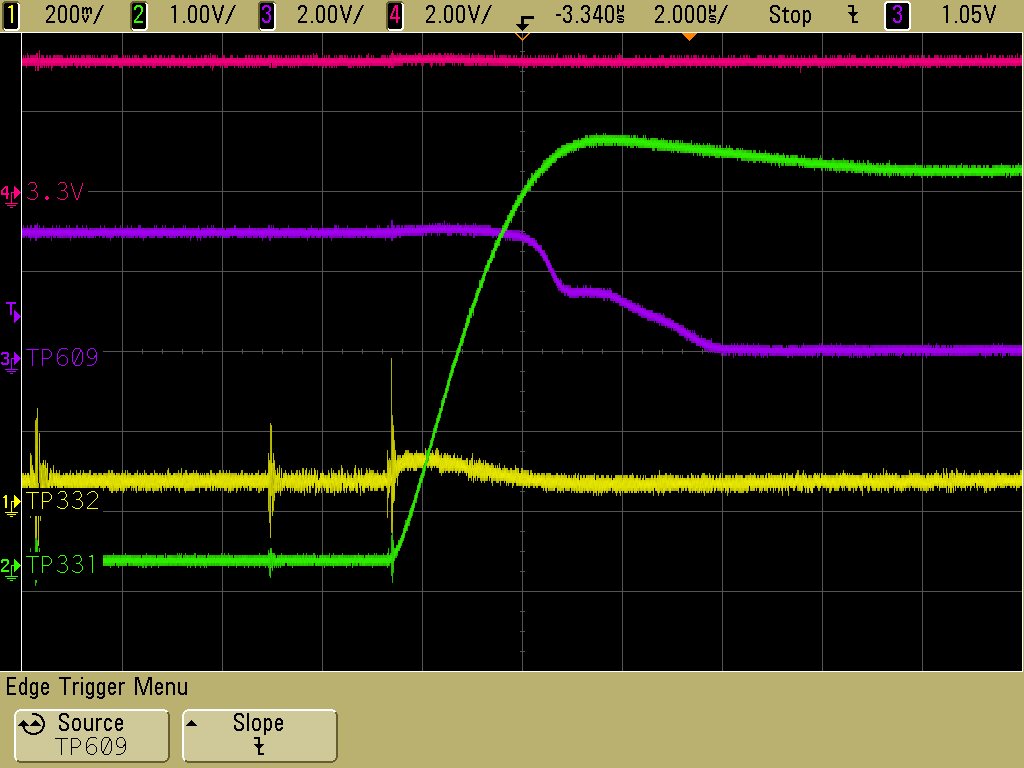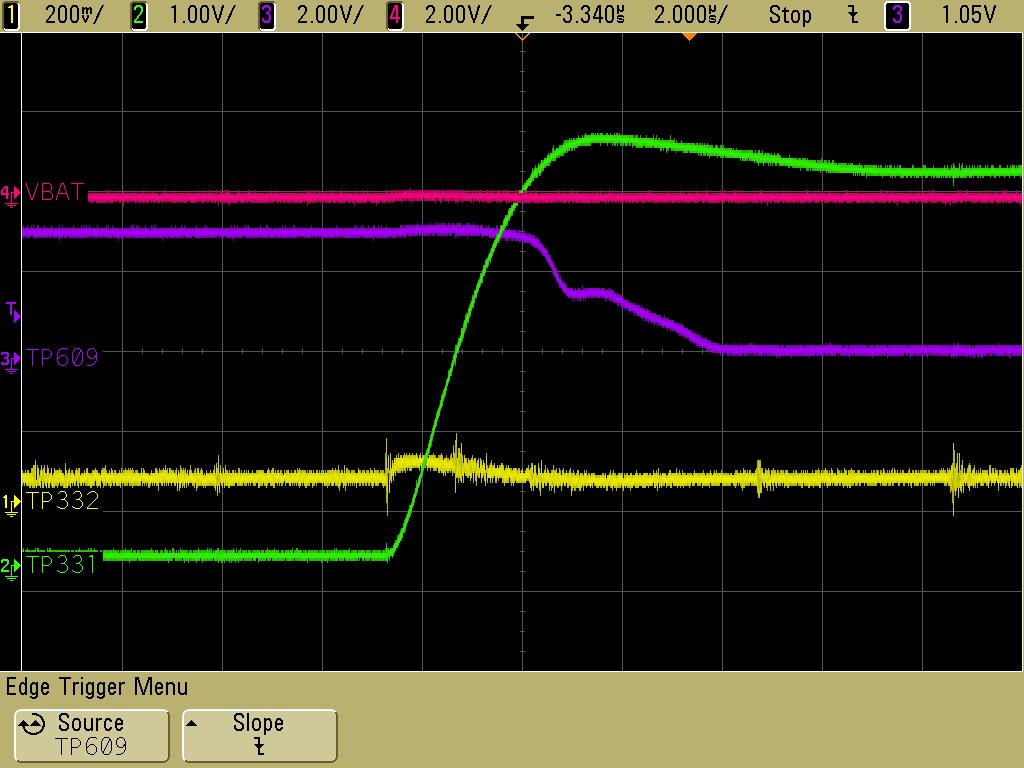I have a design in which I am using the BQ24380 as an overvoltage/overcurrent protection monitor for my USB 5V input. The device seems to work without issue in most cases. However, I have had a high percentage (15% out of a sample size of 20 boards) in which the IC is not functioning properly. The error condition is as follows (please also see the attached circuit that is being used):
1. Vin is at a valid non-fault voltage. It being USB, Vin = 5V.
2. Vbat is pulled to ground through a 100K ohm resistor so that an overvoltage fault condition never exists.
3. Chip Enable is active.
When I first connect 5V, the output goes high without error. In this case, the BQ24380 is working properly. The error condition occurs after I remove the input voltage and then connect it again prior to allowing the input and output voltages to discharge all the way to 0V. If I reconnect the 5V without allowing the input and output voltages to discharge all the way to 0V, the output latches at about 100mV and the FAULT signal is pulled low.
At the moment, I'm not sure why this is occurring. It seems as though I am using the part within spec. I am looking for any information on what scenarios might lead to these results. I have verified that there is no actual fault condition (overvoltage, overcurrent) so I'm wondering what may have damaged this part so that it thinks there is one.






